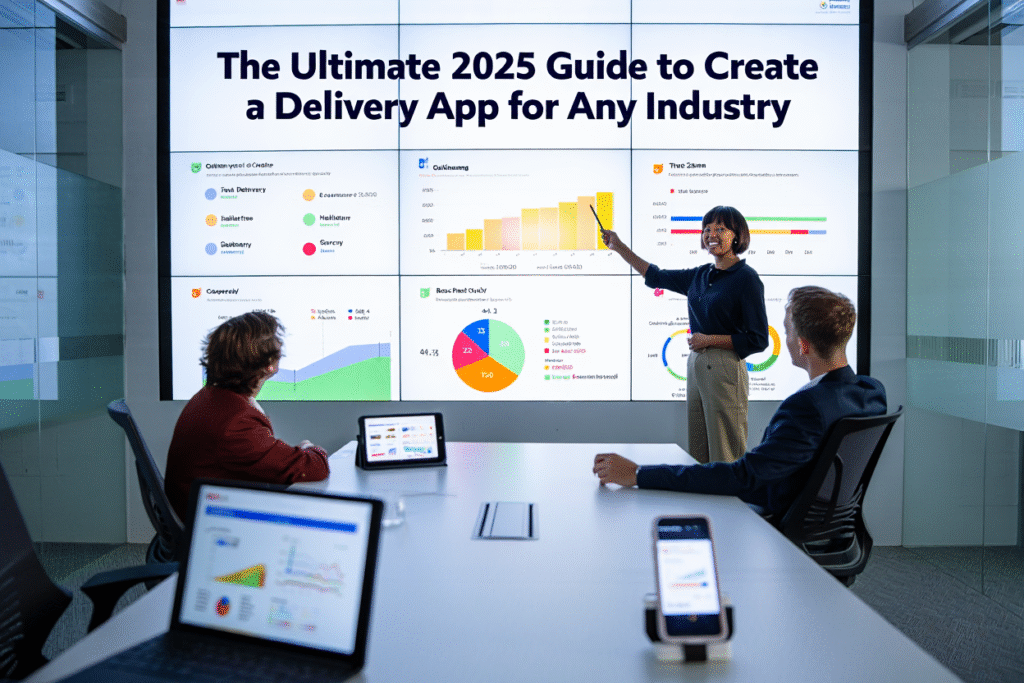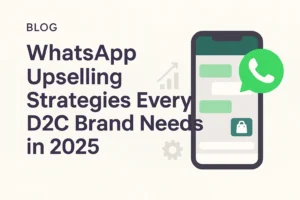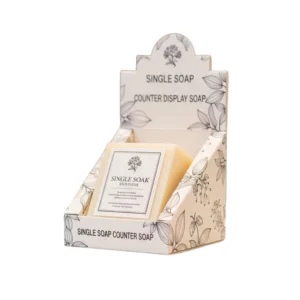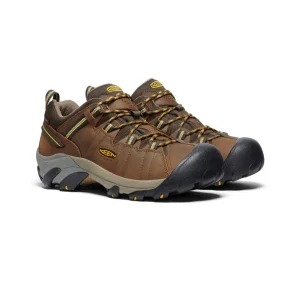
The on-demand economy continues to grow in 2025, changing how companies run and how customers obtain goods and services. Delivery applications are now the foundation of convenience-driven lifestyles, including everything from groceries and food to prescription drugs, home services, and retail. Developing a delivery app is no longer just for the food industry; it can be used in a variety of industries, opening up new revenue streams and improving customer interaction for both entrepreneurs and businesses.
This guide explores everything you need to know to create a delivery app in 2025, covering key trends, features, tech stacks, development costs, and industry-specific use cases.
Why 2025 Is the Right Time to Create a Delivery App
The demand for delivery solutions is stronger than ever, with consumers prioritizing speed, flexibility, and convenience. Some major reasons why 2025 is the best year to create a delivery app include:
- Expanding On-Demand Economy – Global revenue from delivery apps is projected to grow beyond $500 billion by 2030, making 2025 the perfect entry point.
- AI & Automation Integration – Emerging technologies like predictive analytics, generative AI, and smart routing reduce operational costs and improve efficiency.
- Industry Diversification – Beyond food and grocery, delivery apps now cater to healthcare, logistics, retail, and hyperlocal services, opening endless possibilities.
- Changing Consumer Habits – Customers expect everything—from meals to medicines—delivered quickly, securely, and at the tap of a button.
Key Industries Leveraging Delivery Apps in 2025
Delivery apps are no longer industry-specific. Here are the sectors leading innovation:
- Food Delivery – The foundation of on-demand apps, dominated by players like Uber Eats, Talabat, and Zomato.
- Grocery Delivery – Apps like Instacart and Carrefour Now are redefining daily shopping with same-day delivery.
- Pharmacy & Healthcare Delivery – Secure apps offering prescription medicine, health supplies, and teleconsultation add immense value.
- Retail & E-Commerce – Fashion, electronics, and home essentials delivered via mobile-first shopping platforms.
- Courier & Logistics – Businesses use custom delivery apps for last-mile solutions and B2B logistics.
- Hyperlocal Services – Laundry, beauty services, and home cleaning providers use delivery apps to connect with urban customers.
By 2025, businesses across these industries will be adopting delivery apps to boost customer loyalty and streamline operations.
Must-Have Features in a 2025 Delivery App
To succeed in a competitive market, a delivery app must combine customer-centric features with business management tools:
Customer-Side Features
- Simple Onboarding & Registration – Quick sign-up using phone/email/social accounts.
- Smart Search & Filtering – AI-driven recommendations based on behavior.
- Real-Time Tracking – GPS tracking for transparency.
- Multiple Payment Options – Credit/debit cards, wallets, UPI, BNPL, and even crypto in some regions.
- Push Notifications – Order updates, discounts, and personalized alerts.
- Loyalty Programs & Rewards – Encourage repeat customers.
Delivery Partner Features
- Easy Registration & Profile Management
- Smart Route Optimization – AI-enabled maps to save time and fuel.
- Earnings Dashboard – Track daily/weekly payments.
- In-App Chat & Support
Business/Admin Features
- Order Management System – Centralized control of orders.
- Inventory & Stock Updates – For grocery and retail apps.
- Analytics & Reports – Insights into sales, user activity, and delivery performance.
- Dynamic Pricing Models – Adjust based on demand and supply.
Advanced Technologies Shaping Delivery Apps in 2025
Modern delivery apps are powered by innovations that enhance speed, personalization, and efficiency:
- Artificial Intelligence (AI) – For predictive ordering, chatbots, and route optimization.
- Machine Learning (ML) – Personalized recommendations and fraud detection.
- Blockchain – Secure transactions and transparent supply chains.
- Internet of Things (IoT) – Smart lockers and connected delivery devices.
- AR/VR Shopping – Virtual grocery aisles and try-before-you-buy in retail.
- Generative AI – AI-powered customer support, automated content, and dynamic pricing strategies.
Steps to Create a Delivery App in 2025
Here’s a simplified roadmap:
- Identify Your Niche & Target Market – Choose food, grocery, retail, or a multi-service model.
- Define App Features – Based on user needs and industry requirements.
- Select the Business Model
- Commission-based (common in food apps)
- Subscription-based (popular for groceries)
- Freemium with paid premium features
- Choose the Tech Stack
- Frontend: Flutter, React Native, Swift, Kotlin
- Backend: Node.js, Django, Ruby on Rails
- Database: PostgreSQL, MongoDB, Firebase
- APIs & Integrations: Payment gateways, GPS, chat, cloud storage
- UI/UX Design – Clean, intuitive, and mobile-first.
- MVP Development – Launch a minimal version with essential features.
- Testing & Quality Assurance – Ensure flawless performance.
- Deployment & Maintenance – Regular updates, bug fixes, and scaling.
Development Costs in 2025
The cost of creating a delivery app depends on features, tech stack, complexity, and region:
- Basic Delivery App (MVP): $25,000 – $40,000
- Mid-Level App with Custom Features: $50,000 – $100,000
- Advanced Multi-Service Platform: $120,000+
Hiring a professional mobile app development company can streamline the process with end-to-end services, including design, development, testing, and maintenance.
Future Trends in Delivery App Development
Looking ahead, here are the trends businesses must watch:
- Drone & Autonomous Vehicle Deliveries – Faster and cost-efficient last-mile solutions.
- Voice Search & AI Chatbots – Seamless ordering via voice assistants.
- Hyper-Personalization – Tailored promotions and recommendations using AI.
- Sustainability Focus – Eco-friendly packaging and green delivery options.
- Cross-Industry Super Apps – One platform handling food, grocery, pharmacy, and retail deliveries.
Conclusion
In 2025, developing a delivery app presents unique prospects for companies in various sectors. Your app can scale quickly while meeting user expectations if you have the correct business plan, technical stack, and customer-first mindset.
Delivery applications are becoming more than just conveniences; they are vital components of the digital economy, ranging from groceries and food to healthcare and logistics. The time to develop a delivery app that connects sectors and future-proofs your company is now, regardless of whether you are a startup or an established company.







